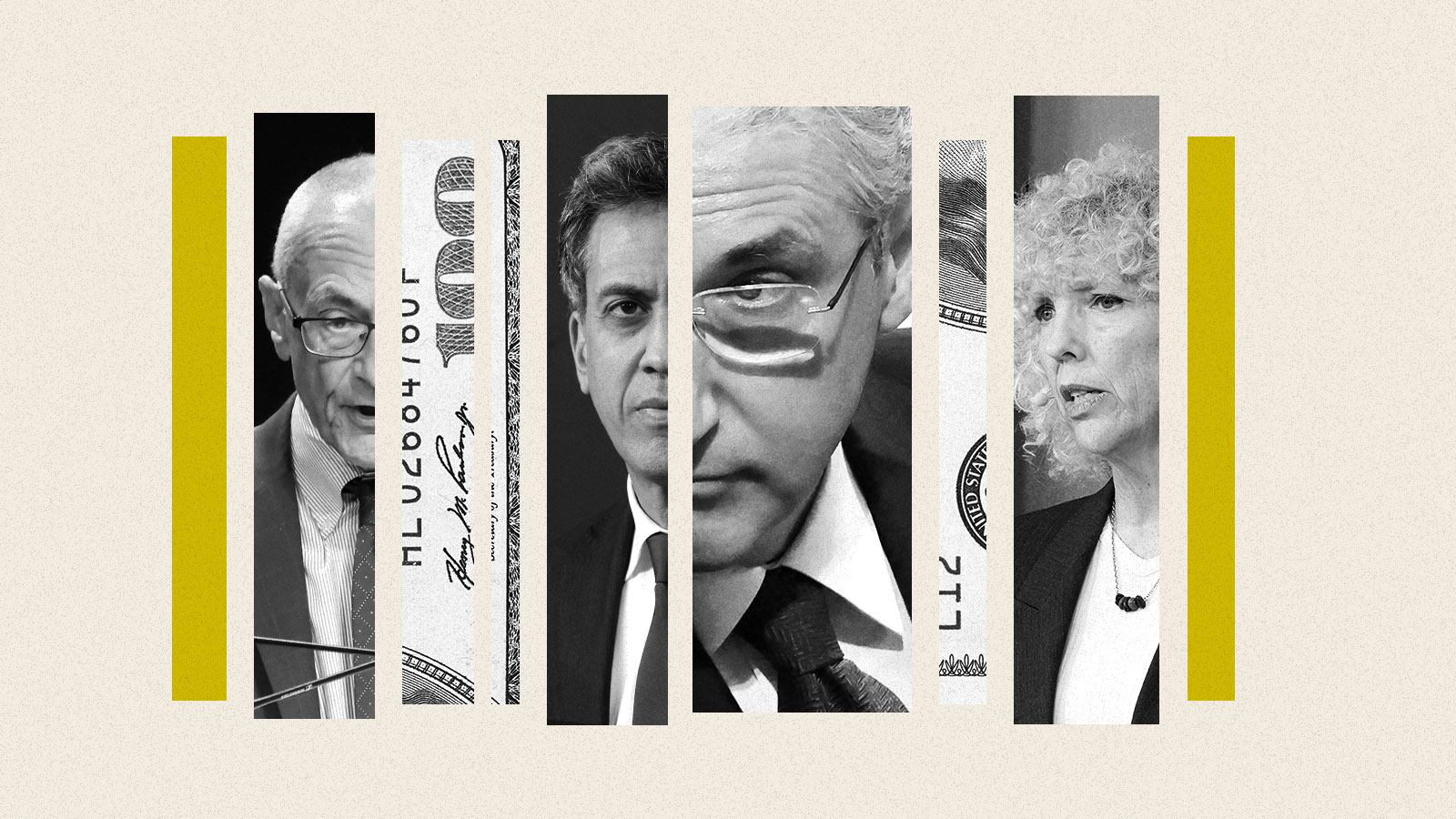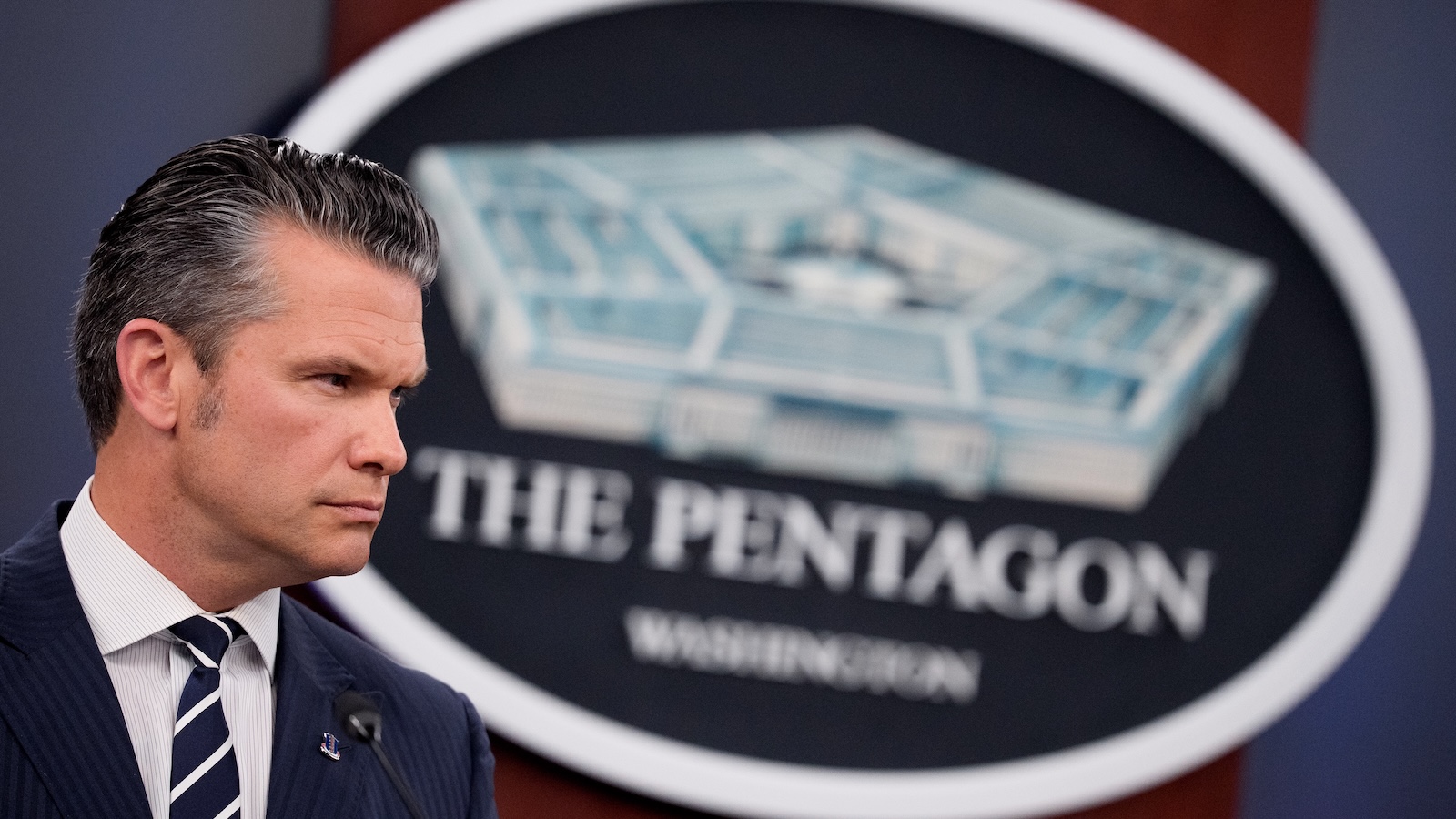Two weeks ago, diplomats from almost 200 countries arrived at a sports stadium on the outskirts of Baku, Azerbaijan, to debate a subject that had never before been at the center of a United Nations climate conference: money.
World leaders have long agreed, in theory, on a dire need to scale up international investment in climate action — investment in both renewable energy and infrastructure that can protect people from climate-fueled drought, fire, and floods. But it is one thing to agree that more money is needed and quite another to agree on who should pay up. That impasse made this year’s conference, COP29, one of the most difficult U.N. negotiations since the 2015 Paris agreement, when the world finally set a numerical target for limiting global warming.
But unlike in Paris, the outcome in Baku saw most diplomats leave disappointed and bitter. The talks, which officials described as “agonizing,” “toxic,” and “corrosive,” pitted wealthy countries — led by the United States, the United Kingdom, and the European Union — against dozens of poorer nations from Latin America, Africa, and Asia. In the end, negotiators for the richer nations managed to push through a deal despite opposition from major countries like India and Kenya, as well as a chorus of small states in the fast-disappearing islands of the Pacific. But even though a huge share of countries represented in Baku were furious with the final shape of the finance agreement, none exercised their right to veto the final text.
The so-called New Collective Quantified Goal, as the funding target is known in U.N. parlance, commits rich countries to leading an effort to triple their climate aid deliveries by 2035, when they must dispatch $300 billion per year. It also calls on them to help raise $1.3 trillion in global climate investments by that year, but doesn’t specify how. This mix of grants and loans will fund all manner of climate projects, from new power plants in rapidly-growing nations to disaster resilience efforts in the world’s most vulnerable countries. And for the first time, contributions from newer global power players like China and South Korea will count alongside those of historically wealthy countries centered in North America and Europe.
The agreement passed with no formal objections following an hours-long debate that lasted well into Sunday morning — almost 36 hours after the scheduled end of the conference. While leaders from the U.S. and Europe said they were satisfied with the result, much of the rest of the world dismissed it as what one climate envoy from Bolivia called “joke.” Though the agreement nods to an ambitious $1.3 trillion annual target that developing countries had demanded, its heavy reliance on loans and private finance — and lack of minimum targets for disaster relief projects and vulnerable regions — are a far cry from the arrangement most diplomats from Africa, Asia, and Latin America had wanted.
Even António Guterres, secretary general of the United Nations, expressed disappointment with the final result.
“I had hoped for a more ambitious outcome,” he said, though he commended U.N. member countries for undertaking “a complex negotiation in an uncertain and divided geopolitical landscape.”
The bitter agreement forged in Baku can be traced back to the disastrous 2009 U.N. climate talks in Copenhagen, Denmark. In an effort to placate the developing world after rich countries scuttled a bid to slash carbon emissions, Hillary Clinton and Ed Milliband, who were then leading diplomats for the U.S. and the United Kingdom, respectively, offered a consolation prize: Rich countries would provide $100 billion in climate aid to poor countries every year from 2020 through 2025. The implicit logic of the offer was that early-industrializing countries like the U.S. and U.K. reaped the benefits of massive fossil fuel emissions for far longer than countries with much later economic development, and the latter now disproportionately pay the price for a warming planet.
But the rich countries blew through their self-imposed deadline. So when U.N. members began discussing a new financial target to replace the $100 billion goal, representatives from the developing world believed they had leverage to argue for something more ambitious: Not only should rich nations increase aid flows to support decarbonization, but they should also deliver more money to ill-funded disaster adaptation projects in vulnerable regions like sub-Saharan Africa — and they should replace debt-producing loans with no-strings-attached grants.
The agreement in Baku did not secure these goals. It maintains the same open-ended logic of the first $100 billion promise, with a small number of added guarantees to appease vulnerable nations. Still, the text of the six-page agreement also opens the door for future changes that could free up the kind of climate aid that the most vulnerable nations believe they need. It proposes a shift away from debt financing, the elimination of time-consuming bureaucracy in the international grant funding process, and even potential taxes on polluting industries—all of which could fundamentally change the funding landscape for climate-vulnerable nations. It just doesn’t provide any mechanisms to make these things happen now.
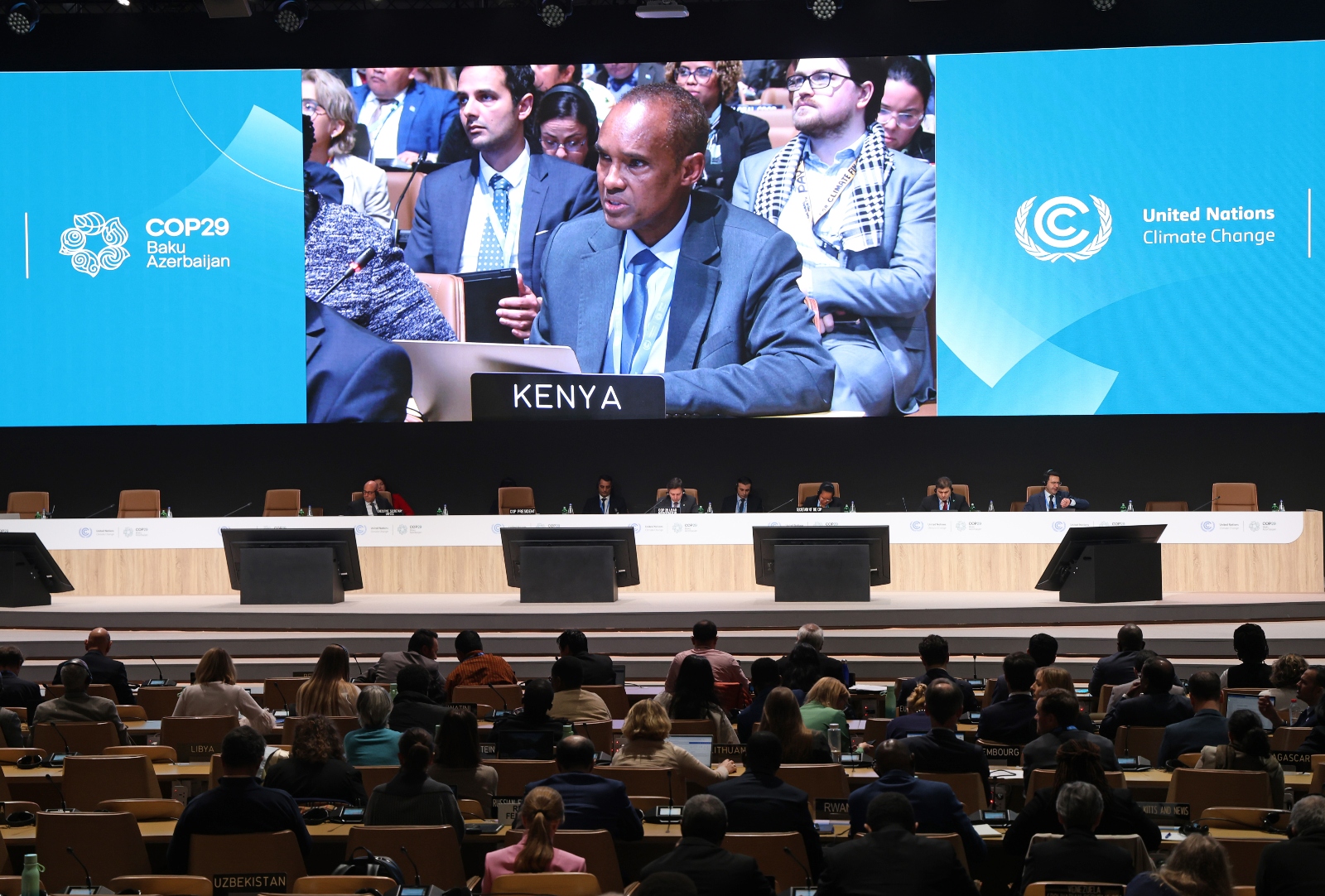
Photo by Sean Gallup / Getty Images
The real test of how far the world moved forward in Baku will be far from the bureaucratic plenaries of the U.N. It will take place in island nations like St. Kitts and Nevis, which needs an up-front infusion of cash to replace its diesel-based power grid with the stores of geothermal energy it has underground; in Colombia, which is seeking foreign investment to diversify its economy away from a reliance on oil exports; and in underdeveloped nations like Malawi, where a recent drought has forced thousands of pastoral families into food insecurity.
“We did not get everything we wanted, but we did achieve something,” said Ali Mohamed, the Kenyan climate envoy and head negotiator for a bloc of African nations, in a press huddle after the talks ended. “I look forward to seeing what we can do with what we did get.”
For months leading up to the summit in Baku, the host government of Azerbaijan promised that COP29 would be “the finance COP.” A new agreement on finance was one of the last outstanding components of the Paris accords that still needed to be hammered out, but negotiators had been debating it for years without reaching anything close to consensus on the major questions: how much money the goal should be, what sorts of projects should be funded, which countries should contribute funding, and who should receive the most funding. As delegates squabbled over small-bore questions during the conference’s first week, these questions remained unresolved.
The U.S. and Europe, hesitant to guarantee more government grants as aid-skeptical nationalists gain traction with their voters, aligned themselves against negotiating blocs with different but overlapping demands. The influential “African group,” led by the mild-mannered Mohamed of Kenya, was pushing a $1.3 trillion target with a focus on funding climate adaptation infrastructure. The Alliance of Small Island States, led by the outspoken Samoan environment minister Cedric Schuster, wanted a minimum allocation guaranteed to its members alone, given their unique vulnerability to sea level rise, plus money to recover from already-inevitable losses. And the massive G77, which represents almost all developing countries, was standing behind China as it resisted calls to join the U.S. and Europe as an official contributor.
As the conference’s second and final week neared its close, negotiators found themselves leaving the talks after the official shuttle buses had departed, giving them no choice but to hail cabs from the side of an eight-lane highway. The conference venue itself became a visual metaphor for the stalemate: Talks took place in a makeshift structure erected on the floor of the Baku sports stadium, positioning negotiators like gladiators in a coliseum.
“We are exhausted,” said Edith Kateme-Kasajja, a climate finance negotiator for Uganda, during the first week. “They are making this impossible for us.”
The person who was supposed to untangle this knot was Yalchim Rafiyev, a 37-year-old diplomat from the Azerbaijani foreign service who acted as COP29’s lead negotiator. Compared to Sultan Ahmed al-Jaber, the deep-voiced Emirati oil executive who chaired last year’s COP28 talks in Dubai, Rafiyev was a far less imposing personality. He often looked harried as he walked the halls of the conference, and toward the end of the summit he appeared on the verge of collapse.

Photo by Sean Gallup / Getty Images
After talks stalled in the first week, Azerbaijan moved the debate out of public view, huddling with hundreds of national environment and finance ministers who flew into Baku for the second week to decide the questions that career civil servants couldn’t resolve. Early in the second week, Rafiyev and his boss, a former state oil company official named Mukhtar Babayev who served as the conference’s formal “president,” took the writing process into their own hands. They told country leaders they would take everyone’s feedback and come back with a draft of their own. With no visibility into the drafting process, many negotiators began to worry that the Azerbaijani presidency lacked the diplomatic experience to handle such a complex and tense process.
For many, that skepticism was soon vindicated: The first Azerbaijani proposal on the finance goal, which appeared less than 36 hours before the official end of the conference, made almost no effort to bridge the gap between the parties, instead offering what one observer called a “caricature” of the most extreme proposals made by developed and developing countries. The presidency convened a massive plenary discussion in which leaders from dozens of countries castigated Rafiyev and his colleagues for taking a lax attitude toward a deal that needed to come together in a matter of days.
The next morning, after a series of all-night drafting sessions, Rafiyev at last produced a text that resolved the basic questions of the goal — and resolved them all in favor of wealthy countries. His proposed goal sought to raise $250 billion by 2035 — and not before — with rich nations “taking the lead” rather than owning the burden, and with ample flexibility for them to draw from the private sector. Gone were a suite of prior proposals to reduce developing country debt loads, move money toward ill-funded adaptation projects in small island states, and funnel investment away from fossil fuels.

Photo by Sean Gallup / Getty Images
Europe and the United States were willing to work with this draft, which ensured their political leaders weren’t on the hook for sums that might prove politically impossible, but almost every other country rejected the draft as a betrayal and an insult. The African group called the proposal “unacceptable,” island states called it “shameful,” and even the British economist Nicholas Stern, an architect of the Copenhagen goal, called it “insufficient.” Progressive advocates held enraged press conferences during which they urged developing countries to walk out, chanting that “no deal is better than a bad deal.”
With just hours to go before delegates started to fly home and risk depriving the conference of a quorum, the only text available was proving unworkable. Longtime observers started to wonder if a total collapse of the talks was out of the question. In the early evening, as the conference officially entered overtime, Rafiyev gave a stiff, three-minute press conference during which he dourly admitted that the text was short of what Azerbaijan had hoped to achieve.
“We will continue to work with parties to make final adjustments,” he said, sweating beneath the glare of a camera light. His press team then hurried him away.
What followed over the next 36 hours was nothing less than a diplomatic coup for the developed world. A group of ministers and negotiators from the United States, European Union, and United Kingdom took matters into their own hands, working around the presidency to convince developing nations to accept a deal whose substance differed little from the draft they decried.
This cadre included some of the most experienced climate diplomats in the developed world. There was Sue Biniaz, a career climate negotiator for the United States, acting in concert with Biden administration climate advisor John Podesta. There was Ed Milliband, an architect of the original $100 billion goal, who had just returned to government after more than a decade out of power in England. There was Jennifer Morgan, the former Greenpeace leader who as climate envoy for Germany has made that country into a worldwide environmental leader. And there was Woepke Hoekstra, the tall and unruffled climate commissioner for the European Union.
Fortified by after-hours food deliveries, this small group worked through the night and into Saturday morning to firm up a deal even as venue staff started to break down delegate offices, and bathrooms ran out of toilet paper. Milliband and Morgan conducted shuttle diplomacy between their offices and those of major delegations like India, Kenya, and Saudi Arabia, looking for ways to make the text more palatable without compromising on favorable core conditions.
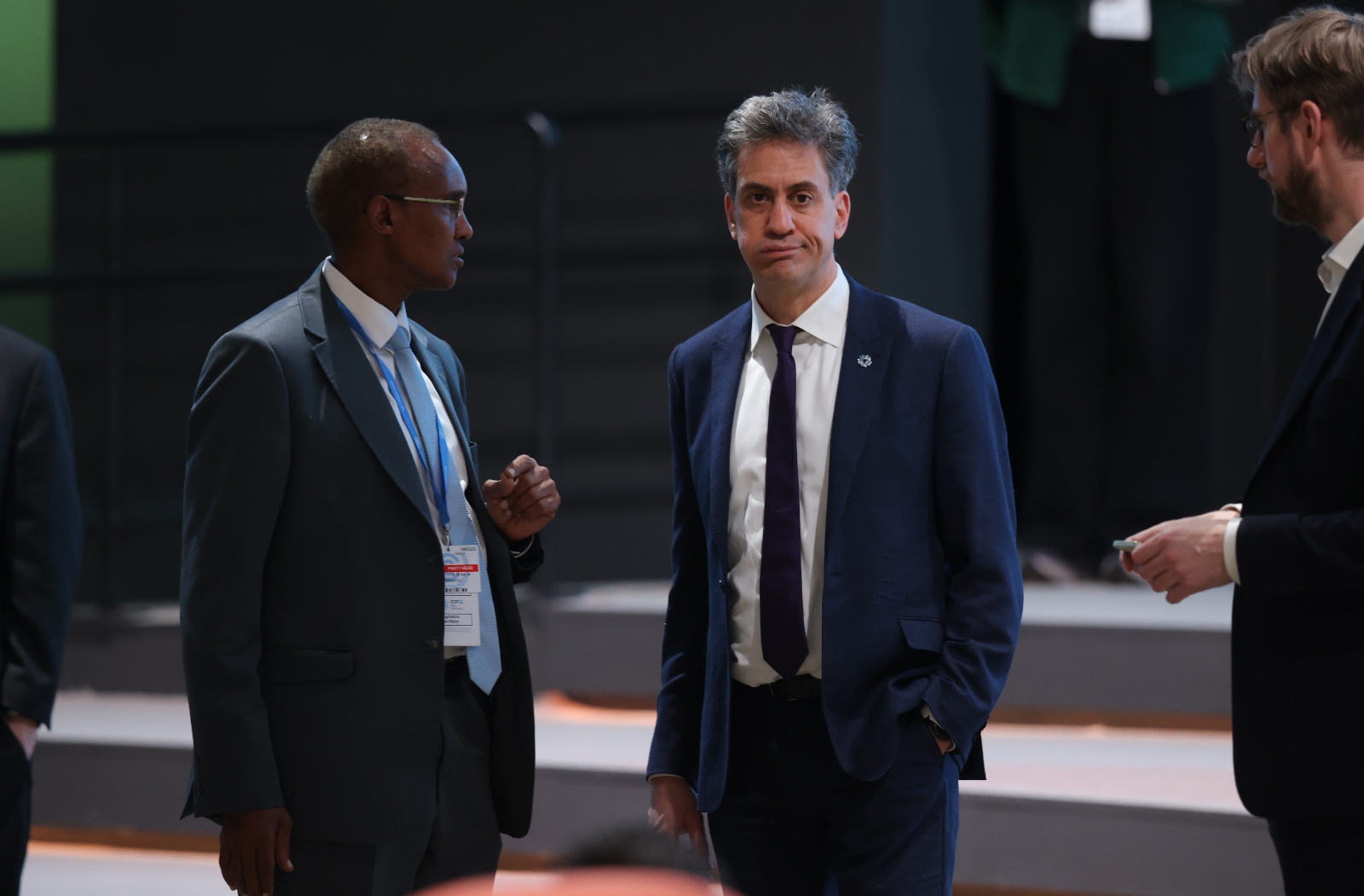
Photo by Sean Gallup / Getty Images
The hardest pill for developing countries to swallow was the $250 billion sum, which was only around 20 percent of what they had demanded. It had taken years for rich nations to put a number on the table, and they had offered a figure that climate envoy Juan Carlos Monterrey Gómez of Panama said was “spit in the face.”
In inflation-adjusted terms, this figure represented only a small step up from the first goal set in 2009, and it was lower than what was proposed by U.N. economists and expert groups. But it also reflected a hard political reality in donor countries. The U.S. had just elected Donald Trump, who has signaled his intention to withdraw the country from the Paris agreement and zero out climate aid. Germany had just seen a high court ruling limiting the size of its federal budget deficit, giving leaders little breathing room for new spending. The United Kingdom has a significant budget deficit and lackluster growth. While donor countries agreed to bump the number up to $300 billion in response to the fury of developing world negotiators, they held firm against going further.
Even when developing countries lowered their ask to $500 billion, developed-country ministers said $300 billion was the best they could offer. They were aided in their argument by a pessimistic electoral backdrop: The political will for big aid spending at future U.N. conferences could be even lower than it was in Baku, since right-wing parties will likely soon control even more parliaments in donor countries like Canada. Bridge-building ministers from Brazil, the host country of next year’s COP, also urged their developing country partners to accept the deal — and resolve the finance issue before it became Brazil’s responsibility. While Marina Silva, the country’s environment minister, told the press that $300 billion was well below the actual need, she argued that it was crucial to secure a deal.
“We all need to come back to the table,” she said.
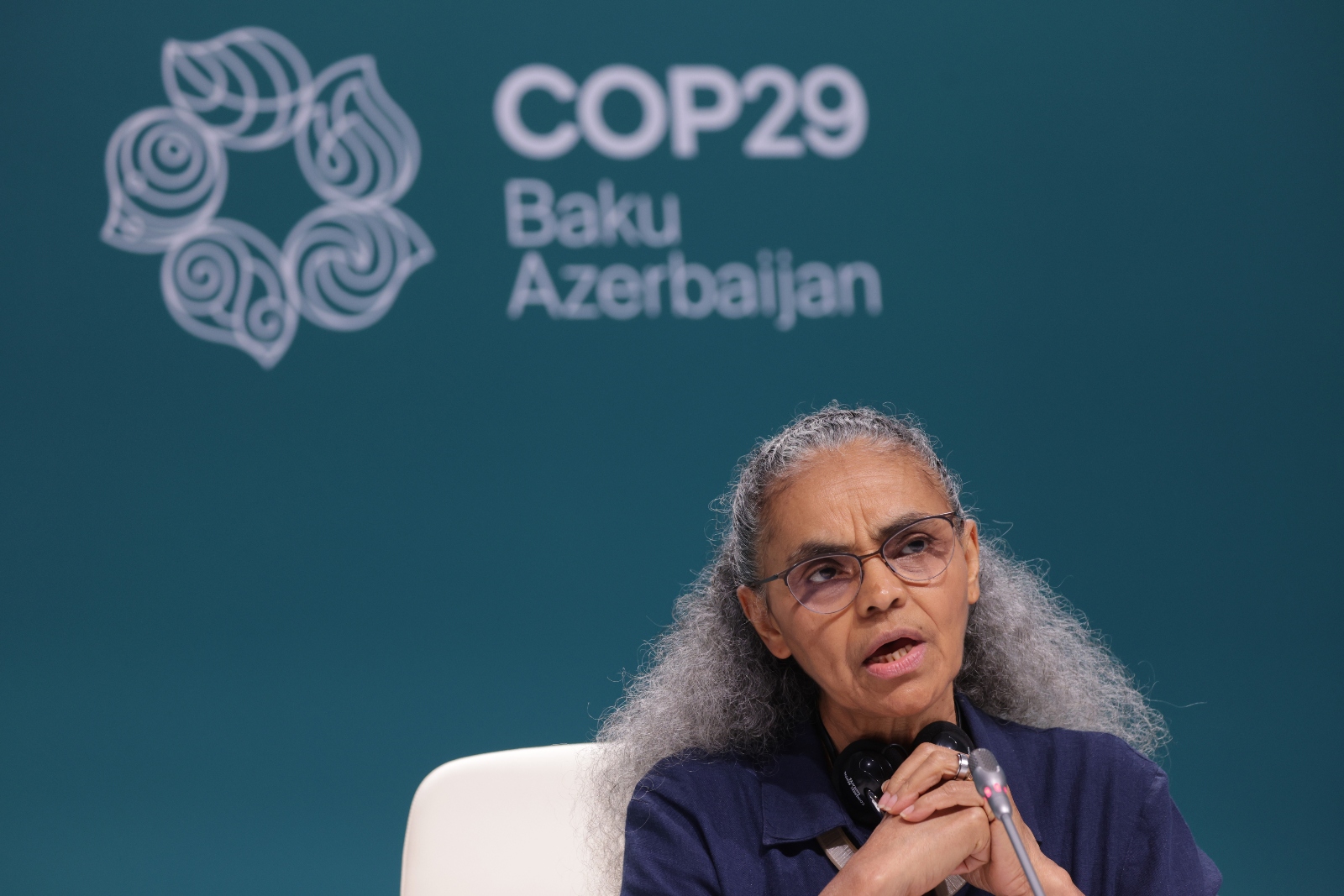
Photo by Sean Gallup / Getty Images
The second problem for the donor countries was China, the world’s second-largest economy and by far its largest annual emitter. Amid repeated calls from Europe and the United States to join them in providing climate aid, Chinese negotiators arrived at the conference intent on insisting otherwise. Deng Xuexiang, the nation’s vice premier, announced in his opening speech that the country had “provided and mobilized” more than $24 billion “in support of other developing countries’ climate response” since 2016 — language meant to imply that China had voluntarily contributed to the first climate finance goal established in Copenhagen. This was a clear signal that the country was ready to talk.
While China rejected calls to reclassify itself and other major emitters as developed countries, which have an agreed-upon responsibility to contribute, after days of bilateral meetings with Germany and the U.S. it agreed to language that would “encourage” it to “make contributions” and tally some of its spending. But negotiators opted not to specify what exactly China and other new donors would be “making contributions” to — that is, they were intentionally unclear about whether or not China’s flows would count toward the $300 billion goal.
By midday Saturday, after hours of overnight consultations, negotiators appeared to believe they had built consensus around some modified version of Rafiyev’s draft text. In the early afternoon, Rafiyev convened hundreds of diplomats in a negotiating room that grew so full that security started to bar key finance experts and foreign ministers from entering. As a scrum of reporters amassed outside the door, the presidency called the room to order.
But almost as soon as the meeting began, two key blocs walked out of the room. These blocs — the Alliance of Small Island States and the Least Developed Countries, a group that represents around 40 very poor economies across Africa and Asia — said $300 billion was far too low for them to consider. If that was all that rich countries were offering, these blocs wanted defined set-asides to ensure that other countries wouldn’t outcompete them for money that could guarantee the very survival of their countries.
“We need to be shown the regard which our dire circumstances necessitate,” said Cedric Schuster, the Samoan chair of the small-islands bloc.
Pandemonium reigned in the stadium for hours. Monterrey Goméz, of Panama, paced the venue telling any journalist who would listen that he would not accept anything less than $500 billion. John Podesta, the Biden administration’s climate czar, emerged from a negotiating room to find himself hounded by protestors, who chased him out of the main lobby area and up to the U.S. delegation office. Alden Meyer, a climate expert at the think tank E3G who has attended all but one U.N. climate conference, told reporters he was worried the talks would collapse thanks in part to the Azerbaijani presidency’s negligence.
“We have a big breakdown in the negotiations here,” he said.
But the deal held together thanks to a few last-minute concessions. First, Samoa’s Schuster led a group of ministers from the small islands and the least developed countries up to Rafiyev’s offices, where they held a meeting with representatives of the United States, the United Kingdom, and the European Union. Behind closed doors, they worked out an agreement to add language that would call for easier financing arrangements in their countries. This was less than the dedicated carve-out the blocs had been seeking, but the leverage was all on the donor countries’ side — there was almost no chance that a deal in future years would be much better.
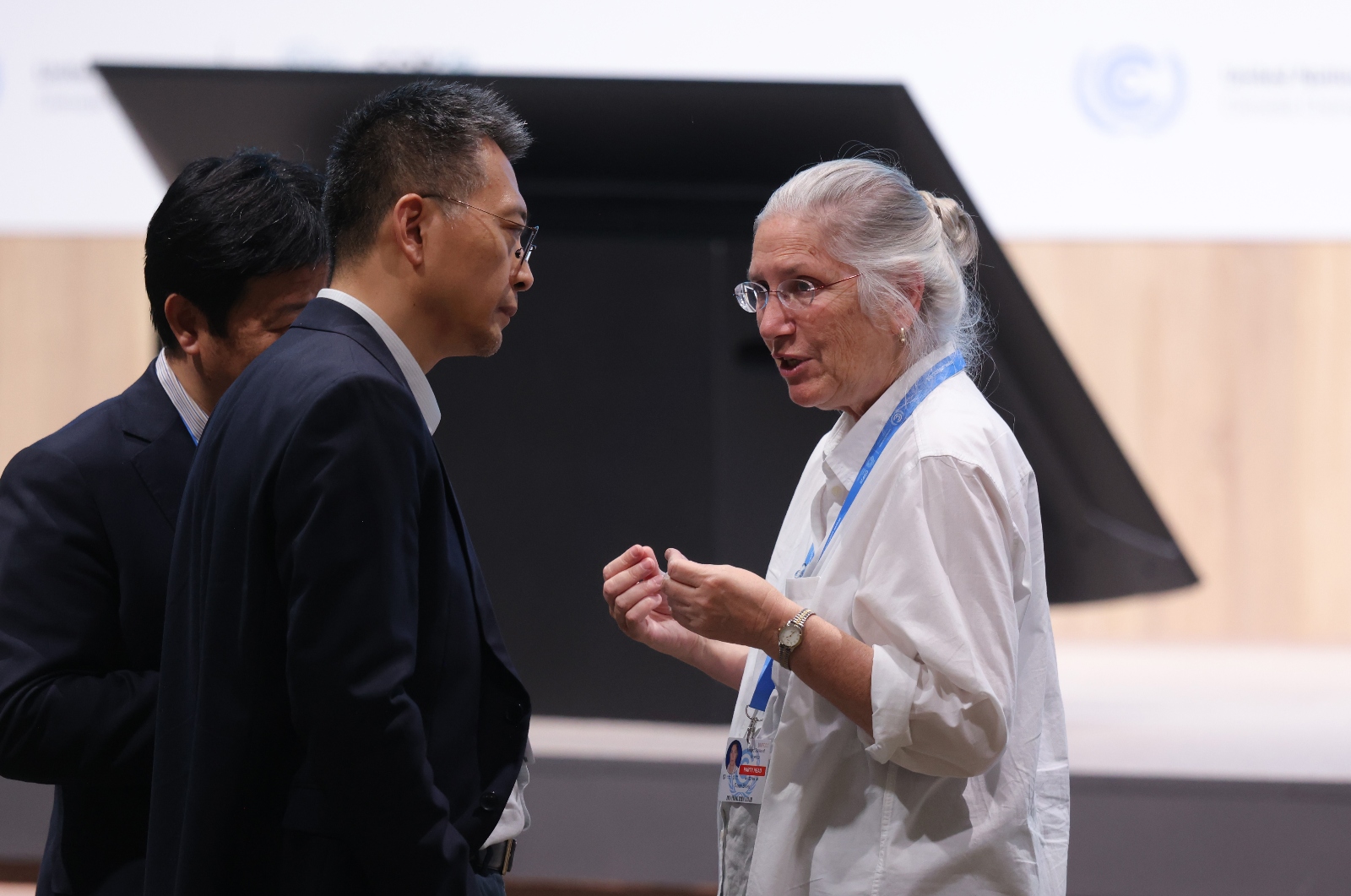
Photo by Sean Gallup / Getty Images
The rich countries now had to retail this agreement to African leaders, who were still frustrated with the small total and who were not receiving any special carve-out. Biniaz, the longtime U.S. negotiator often referred to as “the closer” in climate talks, conferred with African leaders and worked out a series of tweaks that made the text stronger: The funding goal would be “at least $300 billion,” it would discourage the use of debt, and it would come up for review and possible expansion in 2030.
In a surreal moment of stage drama, Biniaz huddled with Ali Mohamed of Kenya, Susana Muhamad of Colombia, and a group of other African ministers in a corner of the packed conference plenary auditorium, running through the changes with them. While the Azerbaijani conference hosts gaveled through a number of procedural items at the front of the room, she presented a marked-up copy of the agreement to a growing scrum of leaders as the rest of the conference looked on in fascination, just out of earshot.
The final hurdle was India, which only the previous night had raised several objections to the goal text. It wasn’t just that the sum was too low and the language was too week, ministers said. It was also that the goal would tally India’s contributions to multilateral development banks as climate finance just as it did for China. This would be a subtle but significant gesture to count India as a contributor of climate aid rather than just a recipient.
With talks on the brink of success, and the hundreds of remaining summit attendees assembled in the plenary hall, Babayev suspended the proceedings so wealthy nations could try to appease India on the plenary floor. Podesta and Hoekstra engaged in a lengthy conversation with Chandni Raina, an Indian finance negotiator, and other senior members of the delegation. Then various senior ministers left the open plenary room to talk in private. (Representatives of India’s delegation did not respond to requests for comment.)
Babayev resumed the conference just after 3:00 am and gaveled through the goal agreement almost at once. Negotiators and delegates around the room rose to their feet in applause, and the Azerbaijani team fist-pumped and hugged on stage. But as soon as the applause died down, recriminations began. Ministers from Cuba, Bolivia, and Nigeria denounced the goal as weak, saying it would leave them unable to mitigate their emissions or adapt to disasters. Cedric Schuster, the head of the small-islands bloc, said he feared that the lack of adequate financing would put the goals of the Paris agreement out of reach. Advocacy organizations and climate nonprofits issued a barrage of statements that called the outcome “a historic failure,” “a serious blow to climate action,” and “a global Ponzi scheme.”
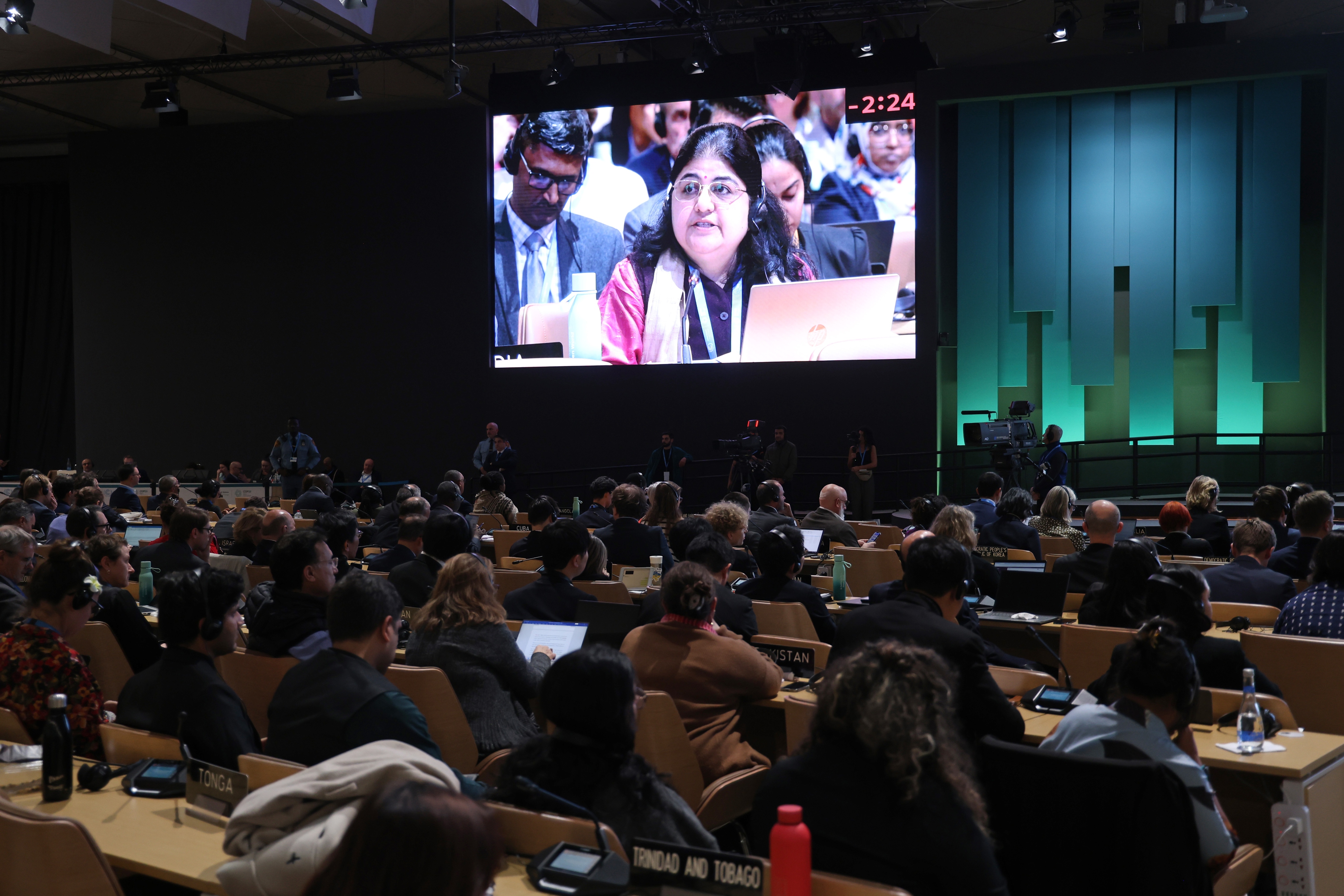
Photo by Sean Gallup / Getty Images
In the climactic moment, India’s Raina took the floor to deliver a coruscating 10-minute tirade against the donor countries, the presidency, and the entire United Nations, calling the goal a “paltry sum” that “does not deliver the climate action that is necessary for our country.” She also claimed she had tried to protest before Babayev brought down the gavel, but that he had ignored her.
“This has been stage-managed,” she said, eliciting around as much applause as the approval of the goal itself.
The lesson of Copenhagen is that the $300 billion number may not turn out to be the most significant part of the new collective quantified goal. Like the previous $100 billion target, it is ultimately just another round number, which rich countries will either achieve or fail to achieve depending on their economic and political circumstances. If they do not succeed in tripling climate aid over the next decade, the rifts between developed and developing countries will likely open again.
The problem with the original promise was not only that developed countries did not fulfill it, but also that the finance they were promising to provide was not fit for purpose. The vast majority of climate aid comes in the form of loans, which increase countries’ debt and force them to choose between, say, expanding solar farms and providing social and health services. Adaptation and resilience projects, like water storage and sea walls, fail to attract even loans, since they don’t produce revenue. The funds that the U.N. has established to hand out grants to developing countries are slow-moving and under-funded, accounting for less than 5 percent of all aid flows, and many small countries struggle to navigate the application process for these funds.
Although developing countries failed in Baku to secure even a portion of what they came for, they may have secured a moral victory: Europe and the United States have at last acknowledged, after a great deal of resistance, that the Paris agreement cannot succeed if the architecture of international finance remains as it is right now.

Photo by Sean Gallup / Getty Images
This acknowledgement is explicit in the text of the goal, which was bolstered to appease developing nations. The final draft urges countries to spend far more money redressing climate damages, urges lenders to provide lower-interest loans to vulnerable countries, and urges climate funds to slash their bureaucratic red tape. It also sets up a “Baku to Belém road map,” a one-year effort that will explore how countries can scale up finance into the trillions “through grants, concessional and non-debt-creating instruments” and potentially taxes on polluting industries. Proposals stemming from this road map will be presented at next year’s COP in Belém, Brazil.
In other words, while the new financial agreement does not change the world’s financial architecture, it does admit that the status quo is unsustainable, something that became painfully obvious in Baku.
“The [numerical aid target] was ever expected to, and could never be, enough to meet the need,” said Kaveh Guilanpour, a climate finance expert at the Center for Climate and Energy Solutions. “If the rest of the decision is fully implemented, it will be transformational.”
But to achieve that transformational change will require an immense amount of cooperation and political will from an international community that has almost always been short on both. As the last negotiators filtered out of the makeshift stadium complex toward taxis and shuttle buses, still bruised from weeks of diplomatic combat, such a long-term shift seemed far from guaranteed.
“We lost,” said Sandra Guzmán Luna, a former climate finance official for Mexico who now helps other developing countries negotiate for aid money. “You can see it with the glass half full, at least we have the path forward. But we lost.”
Source link
Jake Bittle grist.org

